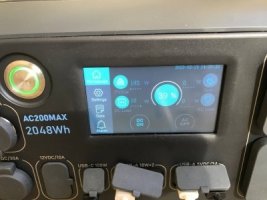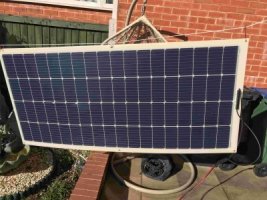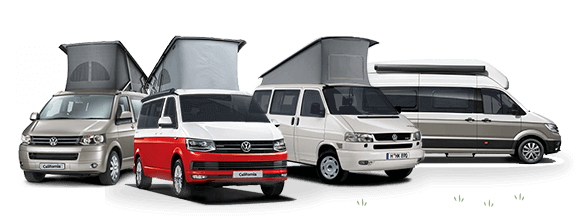Cwcltd
VIP Member
Buy all your VW California Accessories at the Club Shop Visit Shop
Interesting but I would love to see a direct, side by side comparison with a California. It does look small, especially the height. More Caddy than Transporter?
Others beg to differ.looks good.

Easy to charge at home.So with a massive battery pack under the floor, why do they need add a further power bank to run the hob?
Would love to know what they spec'ed for the power source. I used my small microwave in the Cali during my last trip powered with a EF Delta 2. Boiling a mug of water consumed 7-9% of the charge. Cooking a complete meal and brewing a pot of tea would empty the power pack.Easy to charge at home.
Just pull it out and charge fully before a trip. Then Topped up during ‘off grid’ camping using roof mounted solar.
That’s why gas cooking & heating would be better, with a small leisure battery.Would love to know what they spec'ed for the power source. I used my small microwave in the Cali during my last trip powered with a EF Delta 2. Boiling a mug of water consumed 7-9% of the charge. Cooking a complete meal and brewing a pot of tea would empty the power pack.
I don't see this as a practical way to power the induction hob (with likely more than the 1250W needs of my microwave), fridge, lights AND charge all the gadgets. Looks way under equipped in the electrical dept, made even worse when you know you are sitting on top of a 77kWh battery pack.
Converters are not allowed to hook into the EV battery for legal and safety reasons. Even if there was an OEM version I would imagine they would segment off part of the battery pack.So with a massive battery pack under the floor, why do they need add a further power bank to run the hob?
If the Buzz had V2L capability the owner could use the charging connection to power other components so there is a way around that limitation. The Kia EV6 offers that feature and people plug their caravans into the onboard power pack.Converters are not allowed to hook into the EV battery for legal and safety reasons. Even if there was an OEM version I would imagine they would segment off part of the battery pack.
at Outbase campervans in The Netherlands they are also "buzzing" (and building) a ID Buzz Campervan. They state that they are doing this in coordination with VW (@ArunAlec).


As some here know, I use a Bluetti AC200 MAX coupled only to the 12v input charger when driving and a 200W flexi solar panel when stationary, to power my 1500w induction hob, 800w microwave, 1200w air fryer, 1300w Dyson Air Wrap (for the Missus) and various laptops, phones and 5G router on my campervan travels.Would love to know what they spec'ed for the power source. I used my small microwave in the Cali during my last trip powered with a EF Delta 2. Boiling a mug of water consumed 7-9% of the charge. Cooking a complete meal and brewing a pot of tea would empty the power pack.
I don't see this as a practical way to power the induction hob (with likely more than the 1250W needs of my microwave), fridge, lights AND charge all the gadgets. Looks way under equipped in the electrical dept, made even worse when you know you are sitting on top of a 77kWh battery pack.


I've spent a lot of time researching V2l (vehicle to load) which in some vehicle manufacturers such as the Ioniqs and Hyundais and actually allow you to tap into the main traction battery via an in-car 3 pin 230v socket with the rated draw upto 3600W.Converters are not allowed to hook into the EV battery for legal and safety reasons. Even if there was an OEM version I would imagine they would segment off part of the battery pack.
Yup. When I worked at Nissan we did loads of advertising stunts based on V2L with the Leaf, powering streets and the like.I've spent a lot of time researching V2l (vehicle to load) which in some vehicle manufacturers such as the Ioniqs and Hyundais and actually allow you to tap into the main traction battery via an in-car 3 pin 230v socket with the rated draw upto 3600W.
Some other brands such as Chinese MG, need an adaptor that plugs into the charging port but allows full 2400W draw from the main traction battery.
Without having seen one, i have long suspected it was going to be difficult to build a useful campervan out of the IDBuzz. The video confirms my suspicious that the existing ICE Californias are going to see a long life as there is little that does as much, so well, as the current versions. As others remark, this EV version is more Caddy than California.
If the Buzz had V2L capability the owner could use the charging connection to power other components so there is a way around that limitation. The Kia EV6 offers that feature and people plug their caravans into the onboard power pack.
Might be best a avoided unless you are on EHU, otherwsie will eat into your driving range.You can order the Buzz with a 230V socket under the front passenger seat. So it is possible to recharge the ‘leisure’ power bank off the main battery.
Sent from my iPad using Tapatalk
I may be wrong but am pretty certain that this option is just a 3 pin adaptor on a standard 12v outlet - the same as Ford, Toyota and Land Rover offer on some models, only rated to around 150w max.You can order the Buzz with a 230V socket under the front passenger seat. So it is possible to recharge the ‘leisure’ power bank off the main battery.
Sent from my iPad using Tapatalk
The VW California Club is the worlds largest resource for all owners and enthusiasts of VW California campervans.

